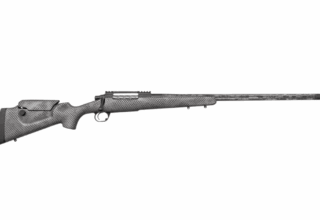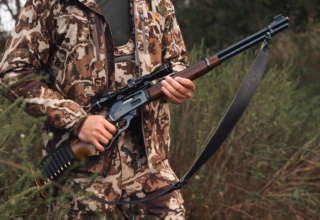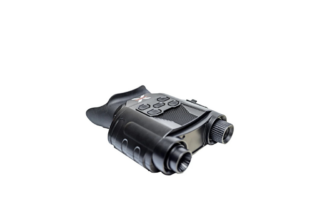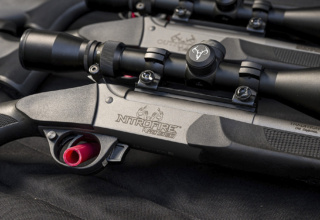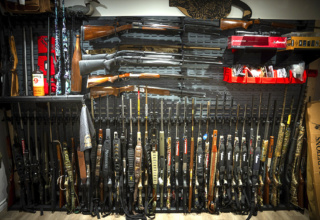We headed to a local reservoir where plenty of mule deer had been spotted in the past. We glassed the shorelines and edges of willow patches and once satisfied we’d seen everything, moved farther down and spotted the next stretch of cover. We no sooner stopped, when I caught sight of antlers sticking out of the grass on the far bank. I was just starting to complain I couldn’t see the antlers properly when two bucks stood and started to feed. It only took a matter of seconds to know I’d be more than happy to put my tag on the bigger one, if I could make it happen.
We sat back and watched the duo feed through our binoculars, as they made their way up the edge of the reservoir, moved into a caragana hedge on an old farmstead, and bedded.

Our stalk began with us traveling about six miles to get around the water and start downwind of the deer. Working back up the edge of the reservoir, keeping out of sight along the shoreline, we covered ground fast. After 900 yards, we slowed down and began to watch every step we took, slipped to within 50 yards of where the buck bedded and started to search for antlers. It didn’t take long, and we located what looked like white sticks moving back and forth at the base of a caragana. Knowing exactly where the deer bedded allowed me to detour around the edge of the shrubs and cut the distance to just 35 yards. I set up in a comfortable position, nocked an arrow and attached my Speed Shot XS BOA release to my D-loop. It was time to sit quietly and wait for the buck to stand.
I held up my bow to look through my APEX sight and knew I’d hold my 30-yard pin a couple of inches high for perfect arrow placement. The fibres were so clear I could see the window my arrow would fly through to avoid branches. We had been sitting and watching for just over 30 minutes when the buck lifted his head and stood up. I drew my bow, placed my sight pin on the vitals and let my arrow go. I watched my arrow fly straight into the deer, making a distinct “whack” sound as it passed through him.
I got on the trail and soon saw antlers sticking up ahead. The buck was the biggest I’d ever taken with archery gear, and it made for an exciting spot-and-stalk experience.

I’ll be back on the trail for a big mule deer buck this fall and already have a new bow set up for the challenge. It’s important to keep all the components lightweight on my new Hoyt Carbon Defiant, and the TRUGLO Carbon Hybrid Micro Sight was the perfect candidate.
With Tru-Fusion Hybrid Technology, the Carbon Hybrid offers the best of carbon and aluminum in a single package. It is the first of its kind on the market, and a natural for anyone looking for minimized weight and superior durability. The hybrid technology will help reduce vibration from the bow and ensure durability and dependability, even under the roughest hunting conditions. I like the five-pin sight for western-style hunting, and with a metal pin design with extra long fiber optics, I’ll enjoy the benefit of increased durability and brightness. The extra-long bracket increases sight radius, and the micro-adjustments make it easy to dial in to hit the “X” with every shot.
The mule deer won’t stand a chance this year!


